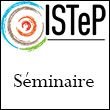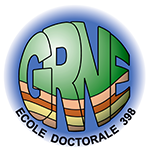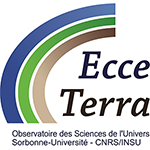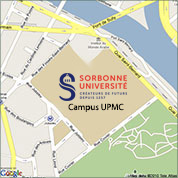Séminaire ISTeP - Sarah Incel

(Ruhr University Bochum)
Hydration and deformation of the lower continental crust
Although plagioclase minerals represent the most common mineral group of Earth’s lower continental crust, experimental data on their deformation behaviour at comparable pressure and temperature conditions, prevailing at lower crustal depths, are scarce. The few existing quantitative data on plagioclase deformation favour the model of a weak lower continental crust sandwiched between two strong layers – the upper crust and the upper mantle. However, due to the record of lower crustal earthquakes, e.g., below the Tibetan plateau, and pseudotachylyte veins found in lower crustal rocks, e.g., in SW and N Norway (Figure 1), the lower continental crust could be much stronger than expected. Due to the mechanical coupling between the lithospheric layers, deciphering the deformation behaviour of lower crustal rocks is not only of importance to unravel the puzzling nature of lower crustal earthquakes but also of tremendous importance to better understand the complex deformation of Earth’s lithosphere as a whole, e.g., post-glacial rebound due to melting of ice sheets or isostatic adjustment due to orogeny and erosion.
Throughout the past 5 years, I experimentally investigated the deformation behaviour of plagioclase-rich rocks with the focus on highlighting the influence of fluid-rock interactions at eclogite-facies conditions on their deformation behaviour. I will present the outcome of my past research on (i) the influence of eclogite-facies metamorphic reactions on the generation of lower crustal earthquakes, (ii) the creation of particular microstructures that resulted from the transient high stresses and strain rates during lower crustal earthquakes, and (iii) the evolution of microstructures in plagioclase-rich rocks. Further, I will show some results of my current research on the deformation behaviour of plagioclase-rich rocks at high-pressure, high-temperature conditions and will give a brief outlook about my planned future research on the development of a twin-based piezometer for plagioclase – a new tool to estimate paleo-stresses in plagioclase-rich rocks.
vendredi 12 novembre à 12h30
Ce webinaire se tiendra également en ligne à partir de 12h30 via le lien Zoom ci-dessous.
Topic: Sarah INCEL' Zoom Meeting
Time: Nov 12, 2021 12:00 PM Paris
Join Zoom Meeting
https://zoom.us/j/98531646907?pwd=ZC9ZWEhPazdidmt6WjhKNE52UFFRdz09
Meeting ID: 985 3164 6907
Passcode: zrB050
Egalement dans la rubrique
- Séminaire ISTeP - Carole Berthod
- Séminaire ISTeP - Razvan Poppa
- Webinaire ISTeP - Yann Klinger
- Webinaire ISTeP - Sylvain Garel
- Webinaire ISTeP - Vincent Roche
- Webinaire ISTeP - Cécile Arenes
- Webinaire ISTeP - Jorge Jara
- Séminaire ISTeP - Samuel Angiboust
- Séminaire ISTeP - Romain Rubi
- Séminaire ISTeP - Jean-Paul Callot
- Séminaire ISTeP - Sabine Den Hartog
- Séminaire ISTeP - Thibault Cavailhes
Chiffres clés
L'ISTeP comprend 108 membres dont :
- 12 professeurs
- 21 maîtres de conférences
- 2 directeurs de recherche CNRS
- 2 chargés de recherche CNRS
- 7 ATER et post-docs
- 26 doctorants
- 21 ITA-IATSS
- 17 collaborateurs bénévoles / émérites





